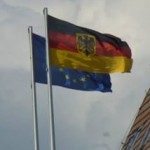Public Relations/Integrated Marketing Communications in Germany
Posted on December 13, 2014
As posted on on Aubia Communications
 The strongest economic country in the European Union, Germany is well known for its efficiency and attention to detail. As a European leader, Deutschland’s marketing and communications industry is well advanced.
The strongest economic country in the European Union, Germany is well known for its efficiency and attention to detail. As a European leader, Deutschland’s marketing and communications industry is well advanced.
Living next door in the German section of Switzerland for the past six months, I’ve had the chance to observe, visit and participate in the German-influenced culture. From the people to the businesses, you certainly see the famous pragmatism throughout.
I wondered how this view affected the public relations/integrated marketing communications profession in the country, so I turned to Jens Kiel for answers. After meeting Kiel at the INTEGRATE conference earlier this year and learning about his background as a German communications professional practicing in the U.S. for almost the past decade, I knew he could provide great insight on the topic.
1. What is the state of public relations/integrated marketing communications in Germany? How is PR/IMC practiced in Germany?
The market of PR and IMC is in flux in Germany these days. The classical marketing firms expand their palette of communication tools to cater to the additional needs of their customers. Their strategic and operational focus is on brand development and management, but they lack the business model, processes, structures and knowledge of market dynamics. A few international players have already founded digital units in Germany, where they test and apply models that have proven successful in the U.S. market.
2. What are the differences, in your opinion, of how IMC/PR is practiced in Germany and the U.S.?
In my opinion, there are three core differences in the audiences of Germany and the U.S.A., commanding a modified approach in communication structure, frequency and direction.
1) Scale and Market Segmentation
One is defined in scale, and the others in education and the country-specific market segmentation. That influences the way IMC caters to them. With a population density of 606 people per square mile in Germany versus 91 people per square mile in the USA, any form of communications finds a more dense and complex audience in Germany. The majority of companies are small to middle-sized businesses (Mittelstand), and as such is a key modifier to the practice.
2) Business Planning
These companies combine a cautious and long-term-oriented approach to business with the adoption of modern management practices, such as employing outside professional management and the implementation of lean manufacturing practices and total quality management. Their employee base is recruited from a populace with a higher degree in secondary and college education due to a state- and federally-funded education system.
3) Media Channels
In the United States we communicate differently – our audience can live in a connected multicultural and multilingual metropolis or a far-stretched rural area with a barren media infrastructure. Density shifts accordingly, highly influencing the targeting strategies and the predictable outcome. Unlike Germany, major metropolitan areas have local TV stations, which often are affiliates of national TV networks. This puts TV more likely in the toolbox of a PR or IMC campaign.
3. What are the similarities?
PR and IMC professionals in both countries need to address the consumer of products and user of services. Selling points are price, accessibility and demand. Secondary attributes are quality and convenience, and the German as well as the U.S. market are concurrent in their demand for these. Access to digital fact-checking has changed how communications has developed in the last two decades – half-truths and misleading statements can be debunked with ease. Public reviews, endorsements and brand, product or service advocacy – to avoid the use of fandom – have influenced how marketing messages are perceived and at which grade of impact.
4. What do you predict are the major developments for IMC/PR in Germany in the next five years?
Attending the Integrate conference in Morgantown, W.Va., reconfirmed to me the changes in application for the classic arena of PR and IMC, as they have been introduced and/or will be introduced in the United States in the imminent future. I think the German market will shift even more from traditional advertising to digital media in the next five years, letting go of the broad mass media approach and becoming more specialized. This will likely bring a reinvention or closer definition of the PR/IMC service provider, as could be perceived on a broader scale in the United States for the last two years.
Selective targeting and the technical platforms for a more interactive way to communicate with the audience, coupled with impact measuring will lead to a sophisticated dialog-based approach. This most likely will lead to high accountability on the agency side, and a performance-based compensation on top of the common time-based fee structure.
5. What advice would you give public relations practitioners in the U.S. looking to work in Germany or with German colleagues and vice-versa?
To U.S. practitioners looking to work in Germany, I point out the demand for high quality communications and the foregoing of buzzword marketing in Germany. Avoid duplicate messaging, focus on synergies and efficiency to maximize the ROI.
For German practitioners aiming to address the U.S. market, I recommend stressing convenience, ease of use or access, and the novelty aspect. European goods or services are in high demand, and welcomed with the benefit of trust for quality, durability and reliability if sourced right. This does not mean that U.S. consumers are more gullible, there is just a cultural recognition of old-world quality that might stem from the – comparatively speaking – young history of the United States.
